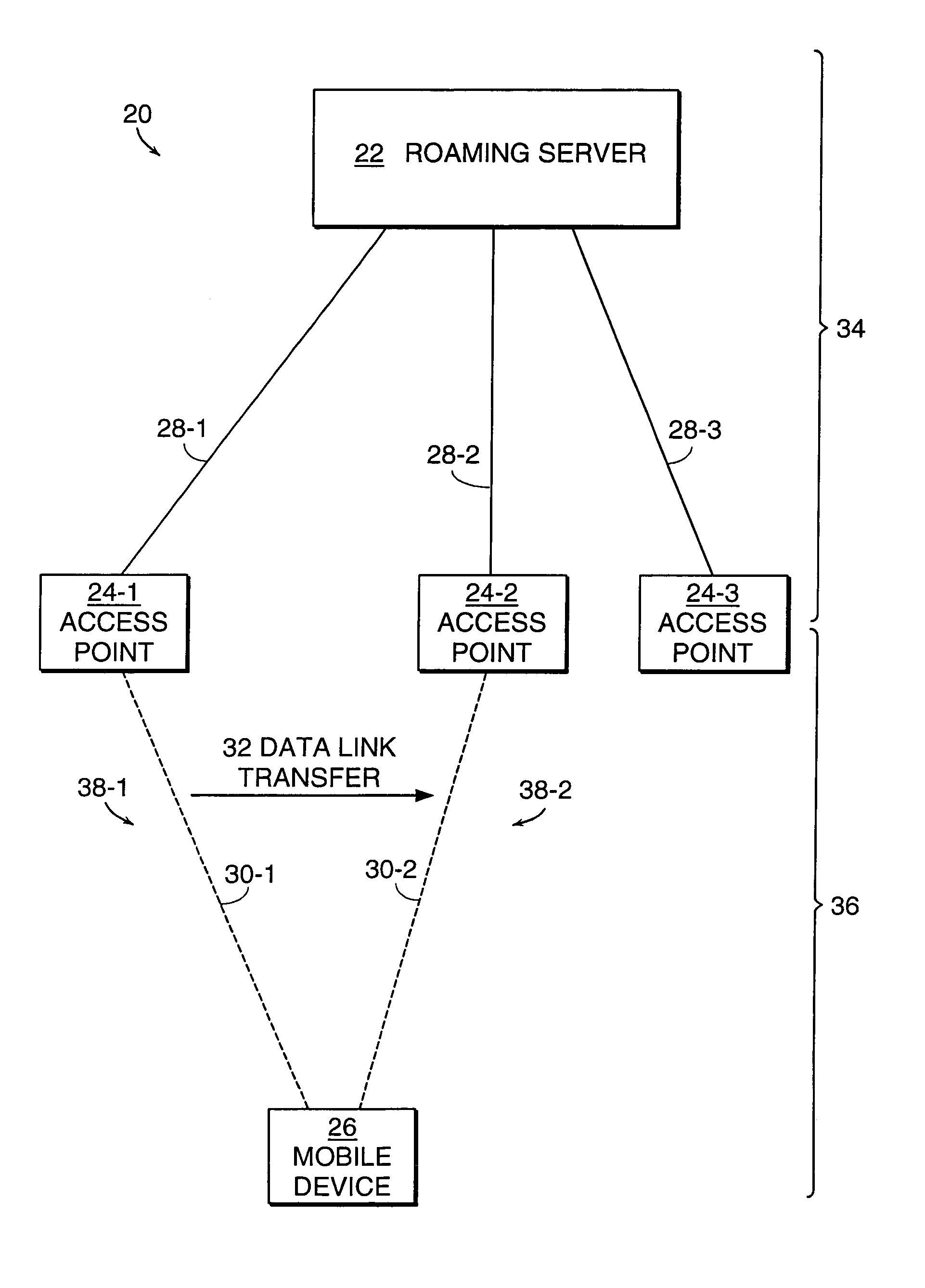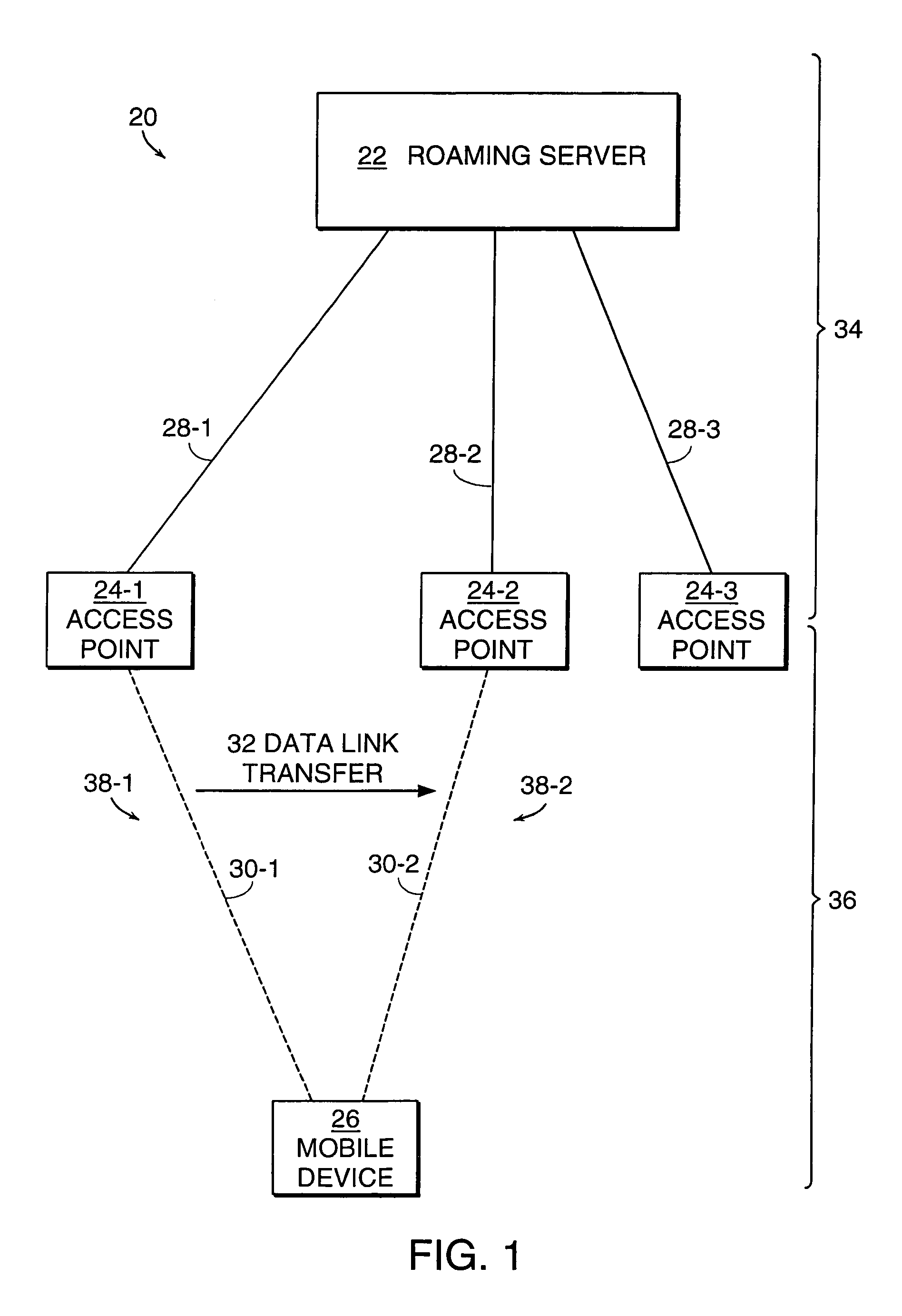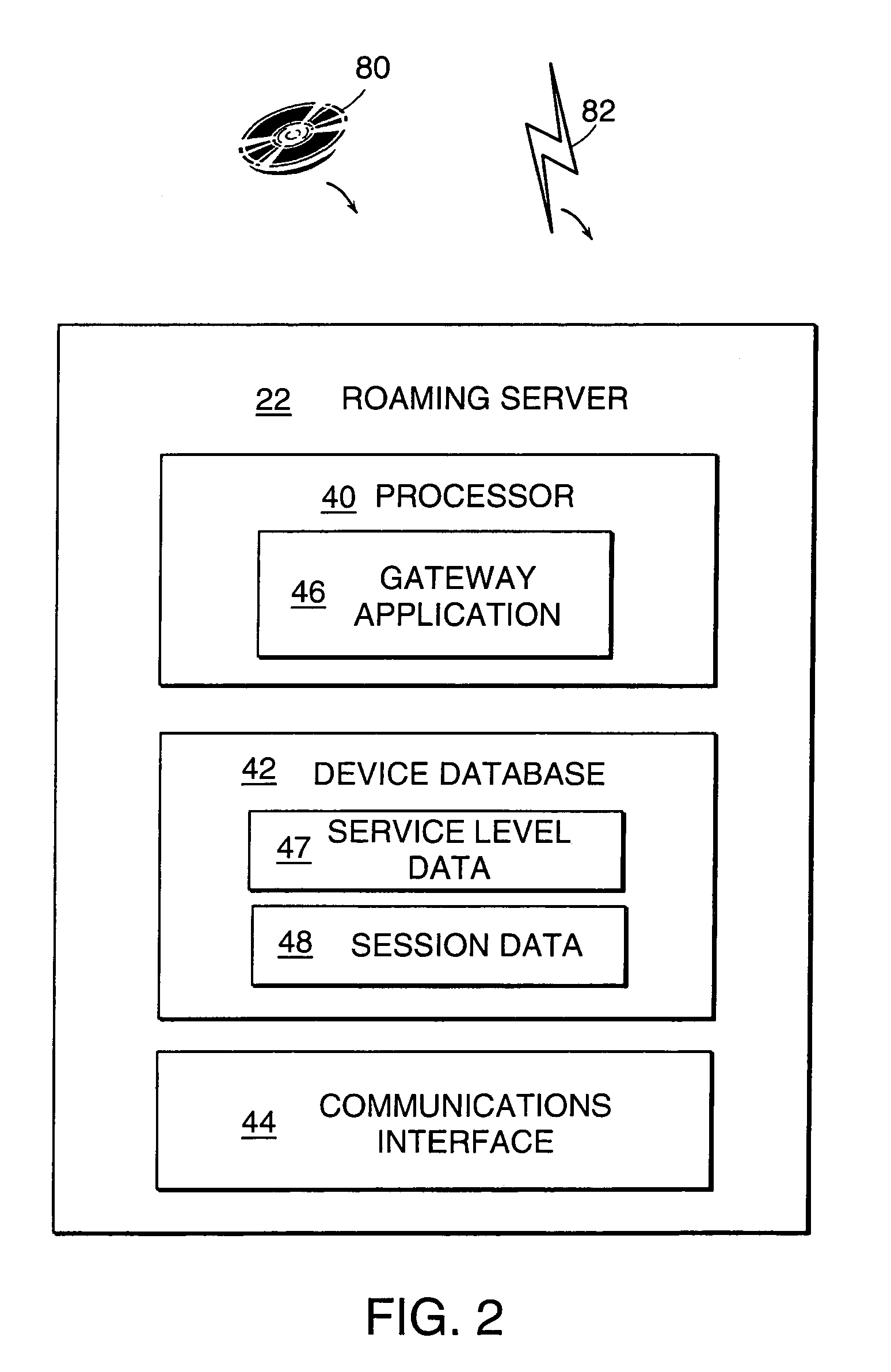Method and system for enabling centralized control of wireless local area networks
a wireless local area network and wireless technology, applied in the field of wireless local area network centralized control, can solve the problems of limited or non-existent ability of mobile devices to change their point of connection to the lan, seamless manner, bluetooth standard version 1.1 does not support seamless hand-off, etc., to achieve the effect of improving radio link performan
- Summary
- Abstract
- Description
- Claims
- Application Information
AI Technical Summary
Benefits of technology
Problems solved by technology
Method used
Image
Examples
Embodiment Construction
[0033]A description of preferred embodiments of the invention follows.
[0034]FIG. 1 is a block diagram of a network 20 including a roaming server 22, access points 24 (e.g., 24-1, 24-2, 24-3) to a WLAN (wireless local area network) 36, and mobile device 26. The network 34 is any suitable network for connecting access points 24 to a roaming server, such as a hard-wired Ethernet LAN or a wireless network using a wireless communications protocol. In one embodiment, the network 34 is hard-wired for part of the network 34 and wireless for one or more other parts of the network 34 (using one or more wireless communications protocols). The WLAN 36 is a network established in accordance with a wireless technology, which the present invention does not require to be the same as any wireless communication protocol or technology used in the network 34. In general, as used herein, the term “wireless technology” refers to a Bluetooth protocol technology, a IEEE 802.11 protocol technology, a ETSI H...
PUM
 Login to View More
Login to View More Abstract
Description
Claims
Application Information
 Login to View More
Login to View More - R&D
- Intellectual Property
- Life Sciences
- Materials
- Tech Scout
- Unparalleled Data Quality
- Higher Quality Content
- 60% Fewer Hallucinations
Browse by: Latest US Patents, China's latest patents, Technical Efficacy Thesaurus, Application Domain, Technology Topic, Popular Technical Reports.
© 2025 PatSnap. All rights reserved.Legal|Privacy policy|Modern Slavery Act Transparency Statement|Sitemap|About US| Contact US: help@patsnap.com



